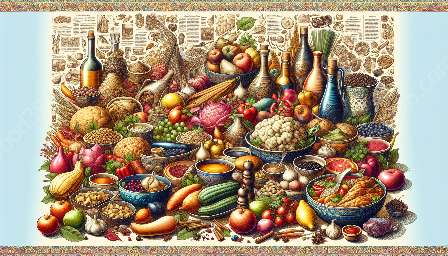Cooking techniques have evolved over time, influencing food culture and the way we eat. As cooking methods have advanced, so too has our understanding of the health implications of how we prepare our food. Different cooking techniques can impact the nutritional content, safety, and overall healthfulness of our meals. In this article, we'll explore the health implications of various cooking techniques and their evolution, examining the impact on food culture along the way.
Evolution of Cooking Techniques and Tools
The evolution of cooking techniques and tools has played a significant role in shaping the way we prepare and consume food. Early humans discovered fire, leading to the development of roasting and grilling as primary cooking methods. Over time, advancements in technology and societal changes have introduced various cooking techniques, such as boiling, steaming, sautéing, and baking.
With the industrial revolution came the mass production of kitchen tools and appliances, further diversifying our ability to prepare food. From traditional pots and pans to modern-day air fryers and sous vide machines, cooking techniques have continuously evolved to meet the demands of a changing world.
Origin and Evolution of Food Culture
Food culture is deeply intertwined with the evolution of cooking techniques. As different societies developed unique cooking methods based on available resources and traditions, food culture began to take shape. For example, the use of spices and herbs in Indian cuisine, or the emphasis on fermentation in Korean cooking, reflects the cultural significance of specific cooking techniques.
As global trade expanded, food cultures merged, creating a melting pot of culinary traditions. This fusion of cooking techniques and food cultures has led to an increasingly diverse and rich culinary landscape, influencing the way we approach health and nutrition.
Health Implications of Cooking Techniques
Grilling and Barbecuing
Grilling and barbecuing are popular methods of cooking meats and vegetables, but they come with health implications. The high heat and open flames can lead to the formation of heterocyclic amines (HCAs) and polycyclic aromatic hydrocarbons (PAHs), which are potentially carcinogenic compounds. Additionally, the charred or blackened areas of grilled food can contain acrylamide, another potentially harmful substance that forms during high-temperature cooking.
Despite these concerns, grilling can be a healthier cooking option when done thoughtfully. Lining the grill with foil or marinating meat in a mixture containing herbs and spices can help reduce the formation of harmful compounds. Choosing lean meats and vegetables and avoiding excessive charring also contributes to a healthier grilling experience.
Boiling and Steaming
Boiling and steaming are gentle cooking techniques that help retain the nutritional content of foods, making them suitable for individuals aiming to enhance their health. These methods minimize the need for added fats and oils, making them ideal for those looking to reduce their calorie and fat intake. Additionally, boiling and steaming can preserve the natural flavors and textures of foods without adding excessive sodium or other additives.
However, it's essential to consider the impact of overcooking when using these techniques. Extended boiling can lead to the leaching of water-soluble vitamins and minerals from the food, potentially diminishing their nutritional value. Proper timing and careful monitoring are crucial to maximize the health benefits of boiling and steaming.
Sautéing and Frying
Sautéing and frying involve cooking food in oil or fat, presenting both health benefits and potential drawbacks. These methods can enhance the flavor and texture of foods, making them more palatable and enjoyable. However, excessive use of oil can lead to a notable increase in calorie and fat content, potentially contributing to weight gain and adverse health effects.
Choosing healthier oils with higher smoke points, such as olive oil or avocado oil, can mitigate some of the negative impacts of sautéing and frying. It's also essential to maintain proper portion sizes and avoid frequent deep frying to minimize the potential health risks associated with these cooking techniques.
Baking and Roasting
Baking and roasting are popular cooking methods that offer a balance between flavor and healthfulness. These techniques allow for the caramelization of natural sugars, adding depth and complexity to dishes without the need for excessive fats or oils. Additionally, baking and roasting can help retain the moisture and nutrients present in foods, contributing to a healthier overall meal.
However, it's important to be mindful of the temperature and cooking duration when using these methods. Overbaking or roasting at excessively high temperatures can lead to the formation of harmful compounds, such as acrylamide, while extended cooking times may diminish the nutritional benefits of the ingredients. Proper temperature control and monitoring are essential for optimizing the healthfulness of baked and roasted dishes.
Conclusion
Understanding the health implications of different cooking techniques is essential for making informed decisions about our dietary habits. As cooking techniques continue to evolve, it's important to consider their impact on the nutritional content, safety, and overall healthfulness of our meals. By being mindful of the potential health risks and benefits associated with various cooking methods, we can approach food preparation in a way that promotes well-being and enjoyment.


